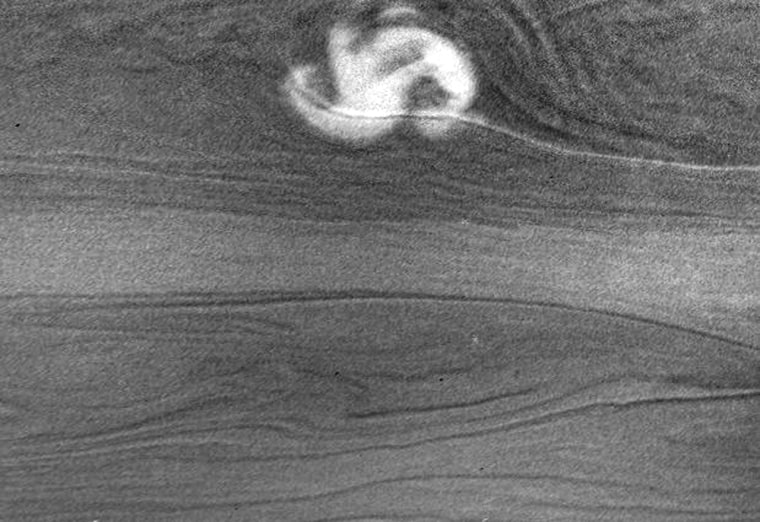Scientists are tracking the strongest lighting storm ever detected at Saturn. The storm is larger than the continental United States, with electrical activity 1,000 times stronger than the lightning on Earth.
Radio outbursts were first detected by NASA's Cassini spacecraft Jan. 23.
The storm is about 2,175 miles (3,500 kilometers) wide.
"It's really the only large storm on the whole planet," said Andrew Ingersoll, a member of the Cassini imaging team.
Earth-based amateur astronomers were able view Saturn's dayside with their telescopes when Cassini could not. The amateurs' images of Saturn provided the first visual confirmation of the storm.
The storm is in a region of the southern hemisphere referred to as "storm alley" by scientists because of the high level of storm activity observed there. The latitude of the new storm matches that of the "Dragon storm," which was a powerful emitter of radio noise and was imaged by Cassini in 2004. It may be a re-emergence of that storm or a new storm, scientists said.
Sunlight reflected from Saturn's rings (called "ringshine") provided illumination needed to allowing the storm and other cloud features to be seen in a new Cassini image.
